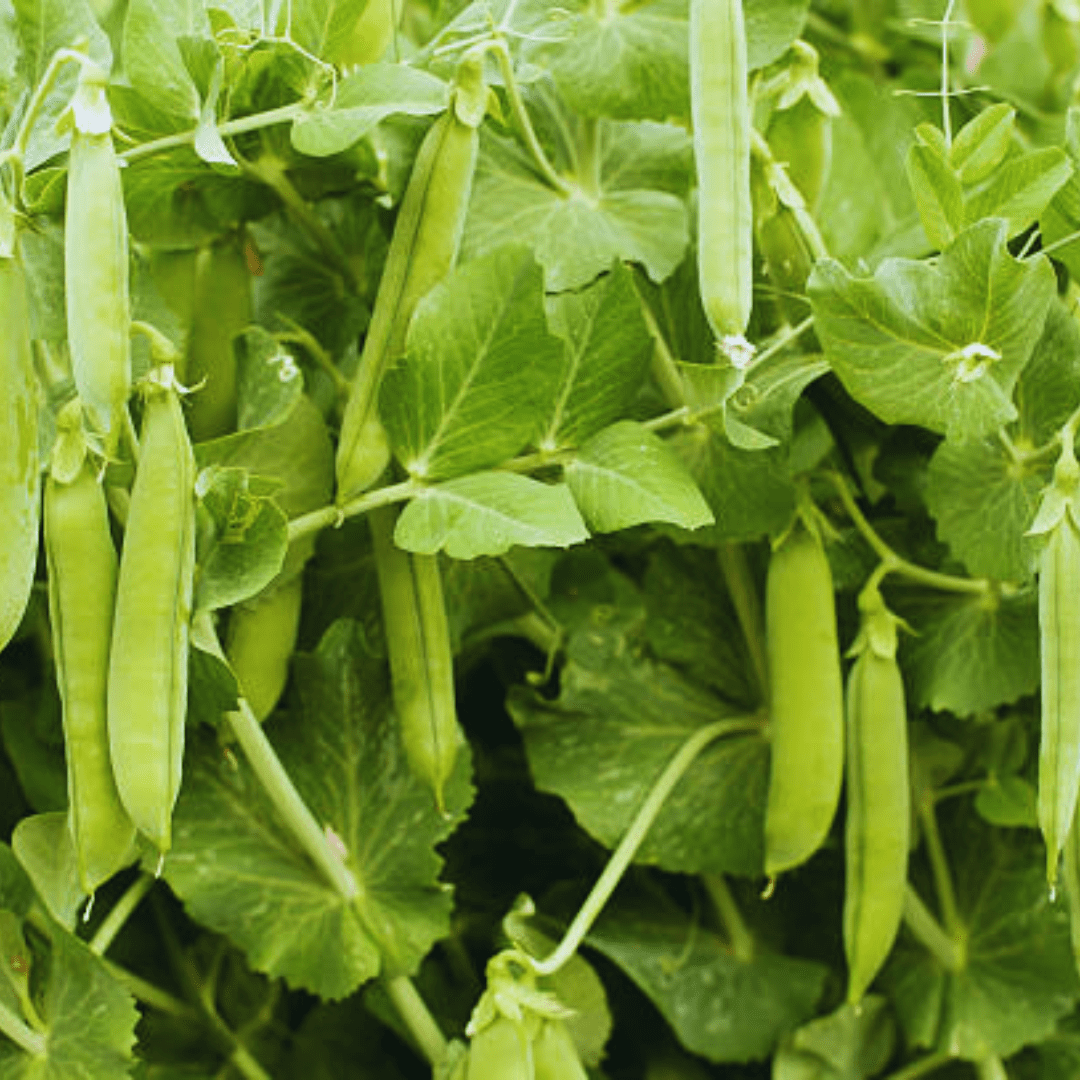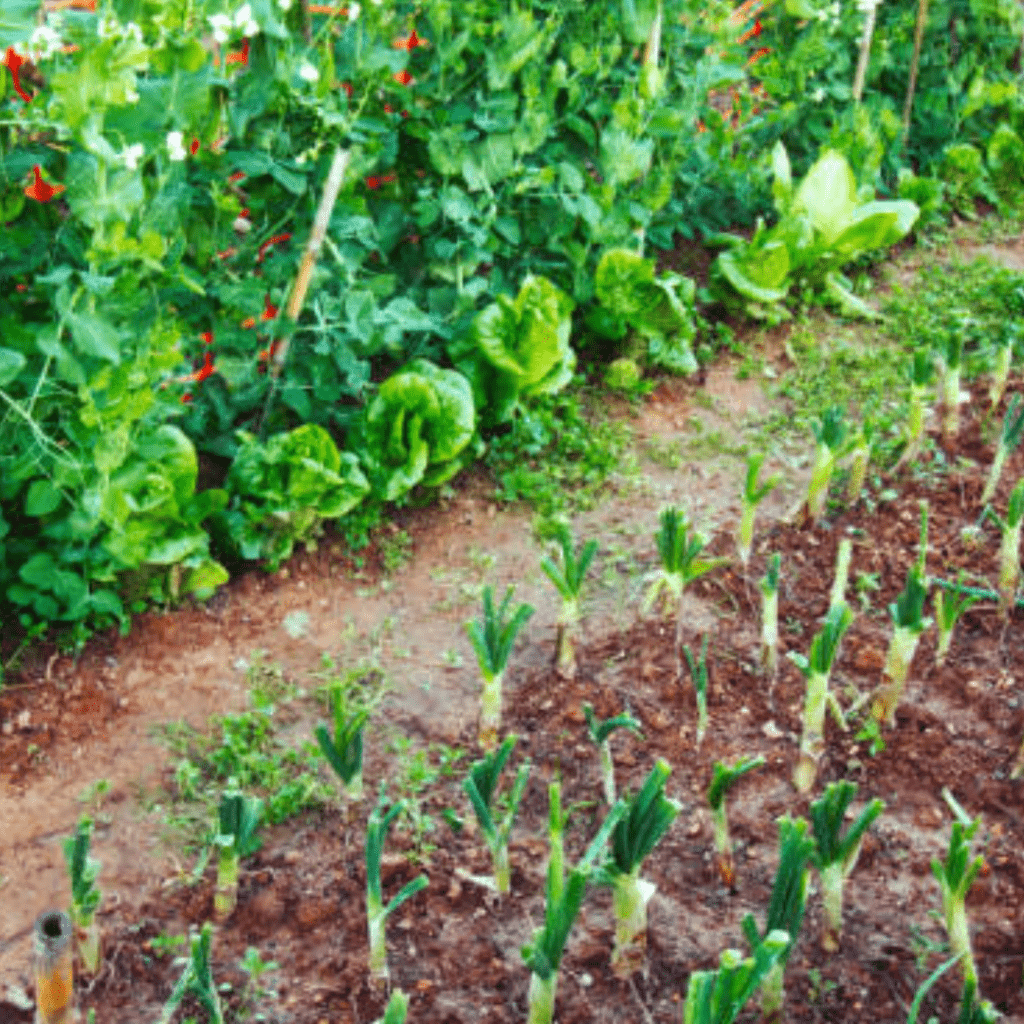Green garden peas.
If you’ve ever dreamed of harvesting your own sweet, crisp, plump garden peas, you’re in the right place. Green garden peas are a delightful addition to any home garden, offering not only a delicious and nutritious crop, but also the satisfaction of growing your own food.
In this guide, I’ll walk you through everything you need to know to cultivate perfect, plump peas, from selecting the right variety and preparing your soil to planting, tending, and harvesting your peas. Whether you’re a seasoned gardener or a beginner with a green thumb, you’ll find valuable tips and insights to help you grow the best peas possible. Let’s get started on your journey to enjoying fresh, homegrown peas straight from your garden!
This is a pinnable post. Tap or hover over any image in this post to pin to your Pinterest Boards.
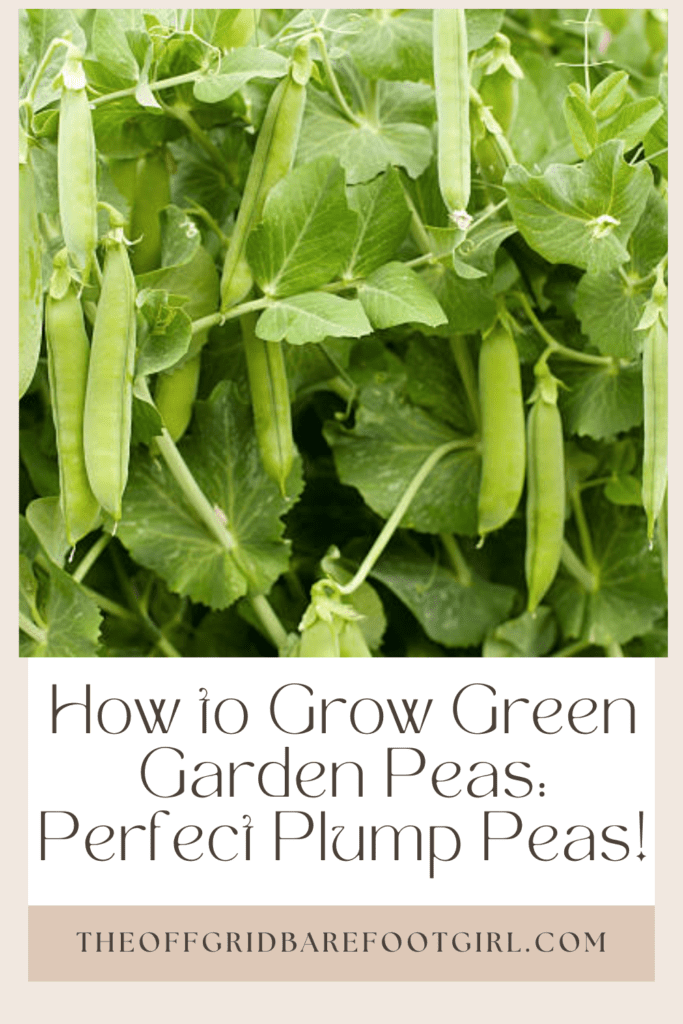
Introduction to Green Garden Peas
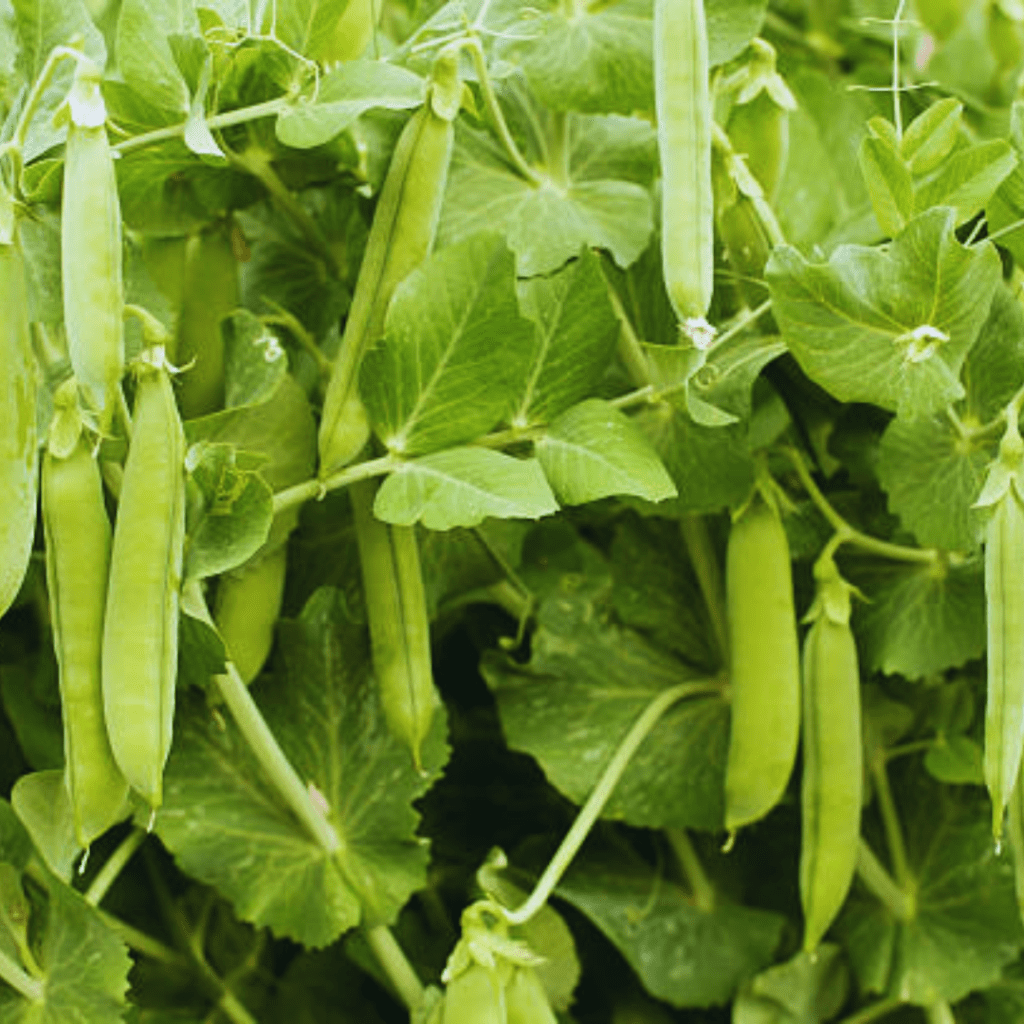
I will start by providing you with an overview of growing green garden peas successfully. I will discuss the importance of understanding the different types of peas and their specific cultivation requirements, including soil preparation, planting techniques, and support structures.
Additionally, I will cover essential aspects of pest control, maintenance practices, troubleshooting common issues, and valuable tips for a bountiful pea harvest. Lastly, I will touch upon the nutritional value of peas and offer some delicious recipes for incorporating these fresh peas into your meals. Let’s get started in growing perfect plump peas!
Types of Green Garden Peas
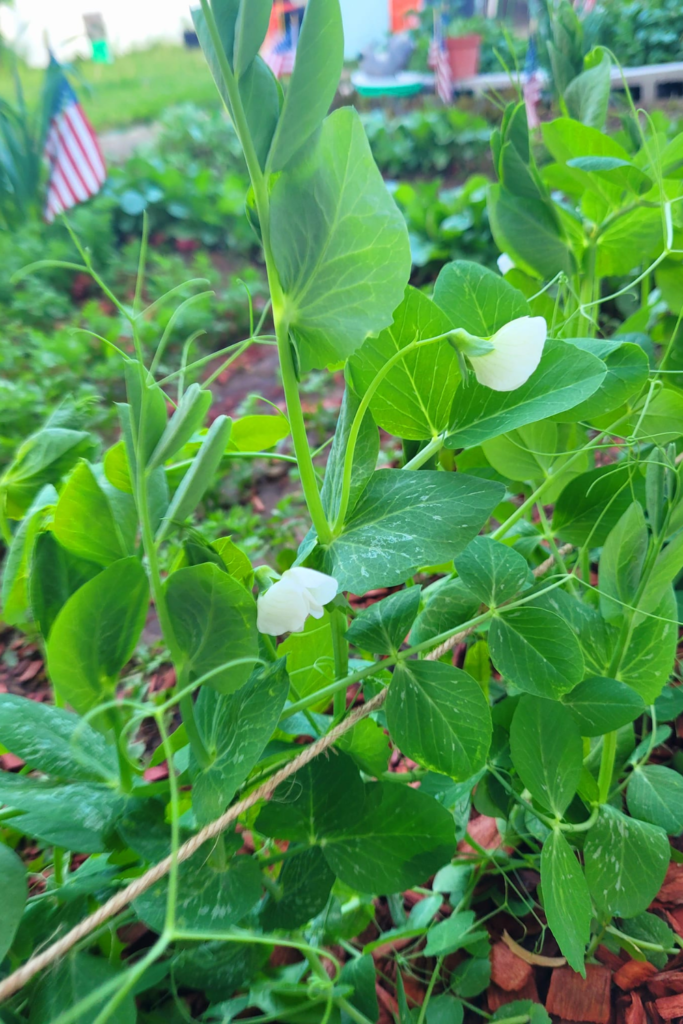
Peas are a versatile and nutritious addition to any garden. Understanding the different types of peas can help you choose the best varieties for your garden based on your preferences and growing conditions.
Recommended Varieties
- Green Garden Peas: Also known as English peas, these are the traditional peas that need shelling before eating, but they offer a delicious and sweet flavor.
- Snow Peas: These flat-podded peas are often used in stir-fries and salads. They are harvested before the peas inside mature, providing a crunchy texture.
- Snap Peas: A cross between snow peas and garden peas, snap peas have edible pods and mature peas inside. They are sweet and great for snacking or adding to dishes.
Sweet Peas
Sweet peas refer to a specific ornamental variety of flowering peas that are prized for their colorful and fragrant blooms rather than their edible pods or peas. These peas are commonly grown for decorative purposes in gardens and are not typically consumed.
Field Peas
Field peas, also known as cowpeas, are a type of pea that is grown primarily for use as a cover crop or for animal forage. These peas are often used in agricultural practices to improve soil fertility and structure, making them valuable in crop rotation systems.
Understanding the different types of peas can help you make informed decisions when planning your pea garden. Whether you prefer traditional green garden peas for culinary purposes or sweet peas for their aesthetic appeal, there is a pea variety suited to meet your gardening goals.
Cultivation Guidelines
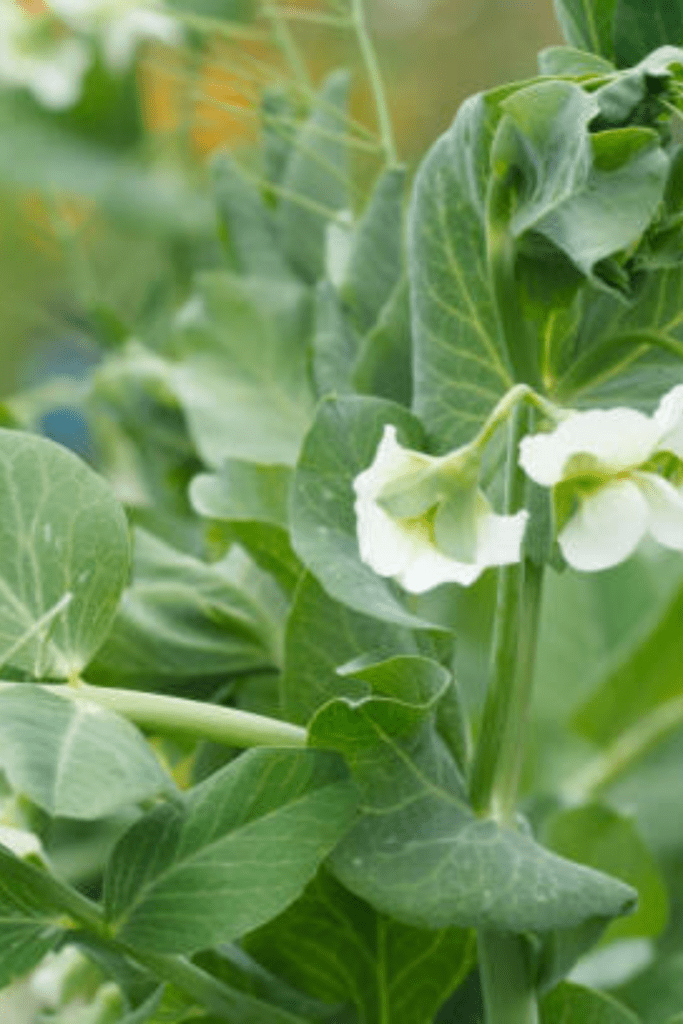
Soil Preparation
Preparing the soil is crucial for growing healthy green garden peas. Follow these steps for optimal soil conditions:
- Ensure the soil is well-drained to prevent waterlogging, which can harm pea plants.
- Dig the soil to a depth of about 6-8 inches to loosen it up and improve aeration.
- Add organic matter like compost or well-rotted manure to enrich the soil with nutrients.
- Test the soil pH and aim for a slightly acidic range around 6.0-7.5 for successful pea growth.
Planting and Spacing
Proper planting and spacing play a significant role in the growth and development of pea plants:
- Sow pea seeds in early spring as soon as the soil can be worked, typically 4-6 weeks before the last frost.
- Plant seeds about 2 inches apart in rows that are spaced 18-24 inches apart.
- Consider creating trellises or using a pea fence to support the plants as they grow.
- Thin out the seedlings to maintain a spacing of 4-6 inches between plants to ensure good airflow.
Support Structures
Pea plants are climbers and require support structures to grow upward and prevent tangling:
- Use a trellis, pea fence, or stakes to support the pea plants as they grow.
- Install the support system at the time of planting to avoid damaging the roots later.
- Train the vines to climb the support structure to prevent them from sprawling on the ground.
- Regularly check the supports as the plants grow taller and adjust if needed to prevent bending or breaking.
Watering and Fertilization
Proper watering and fertilization are essential for healthy pea plant growth and bountiful harvests:
- Water the plants consistently, keeping the soil evenly moist, but not waterlogged.
- Avoid overhead watering to prevent fungal diseases; instead, water the base of the plants.
- Fertilize lightly with a balanced fertilizer when the plants start flowering to support pod development.
- Consider a side-dressing of compost or well-aged manure mid-season for an extra nutrient boost.
Pest Control and Maintenance
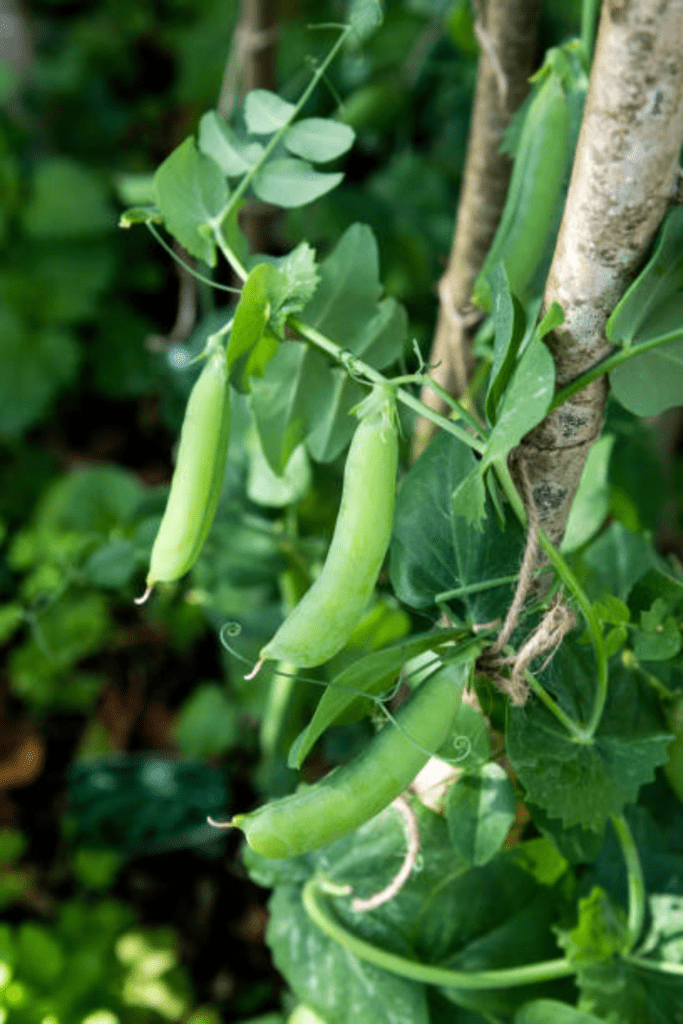
Weed Management
When it comes to growing green garden peas, weed management is essential to ensure the peas have sufficient nutrients and space to thrive. Here are some tips for effective weed management:
- Regularly hand-weed the pea patch to prevent weeds from competing with the pea plants for resources.
- Applying a thick layer of mulch around the pea plants can help suppress weed growth.
- Avoid using chemical herbicides near pea plants as they can harm the delicate pea vines.
Insect and Disease Control
Insects and diseases can pose a threat to your green garden pea crop if not managed properly. Here are some strategies for insect and disease control:
- Inspect the pea plants regularly for any signs of pests or diseases such as holes in leaves or discoloration.
- Introduce beneficial insects like ladybugs or lacewings to help control pest populations naturally.
- Practice crop rotation to reduce the risk of diseases building up in the soil over time.
Here are some of my resources for pest and disease management in your garden!
- How to Release Ladybugs In Your Garden for Organic Pest Control
- How to Effectively Combat Powdery Mildew in Your Garden
- The Best Tips for Organic Gardening
- How to Grow Marigolds As Pest Control In Your Vegetable Garden
Harvesting Techniques
Harvesting green garden peas at the right time is crucial to ensure optimal flavor and texture. Here are some techniques for harvesting peas:
- Harvest peas when the pods are plump and shiny, but before they become tough and starchy.
- Gently pull the pods off the vines to avoid damaging the plants.
- Harvest regularly to encourage more pod production; the more you harvest, the more peas the plant will produce.
Here is my other post about growing peas for more tips!
How to Grow Garden Peas for a Bumper Crop
Troubleshooting and Tips
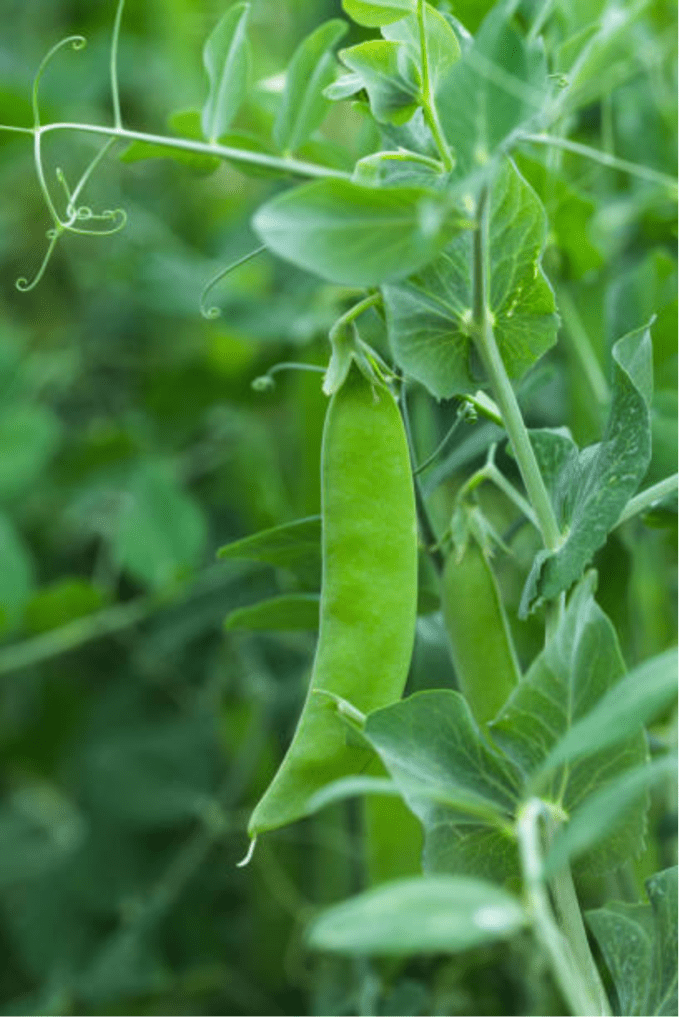
Common Growing Mistakes
When growing green garden peas, it’s common to make mistakes that can affect the health and yield of your plants. Here are some typical errors to avoid:
- Planting Too Early: Planting peas too early in cold and wet soil can lead to poor germination and growth.
- Overwatering: Peas prefer well-draining soil, so overwatering can cause root rot and other issues.
- Ignoring Support: Pea plants require support as they grow, so neglecting to provide trellises or stakes can result in tangled, less productive plants.
- Skipping Fertilization: Not fertilizing properly can lead to nutrient deficiencies, impacting plant growth and pea production.
Specific Care Instructions
To ensure your green garden peas flourish, follow these specific care instructions:
- Mulching: Apply mulch around the base of pea plants to retain moisture and suppress weed growth.
- Pruning: Regularly prune pea plants to improve air circulation and avoid disease development.
- Harvesting: Harvest peas promptly when they reach maturity to encourage further production.
- Crop Rotation: Rotate pea plantings annually to prevent the buildup of pests and diseases in the soil.
Nutrition and Recipes
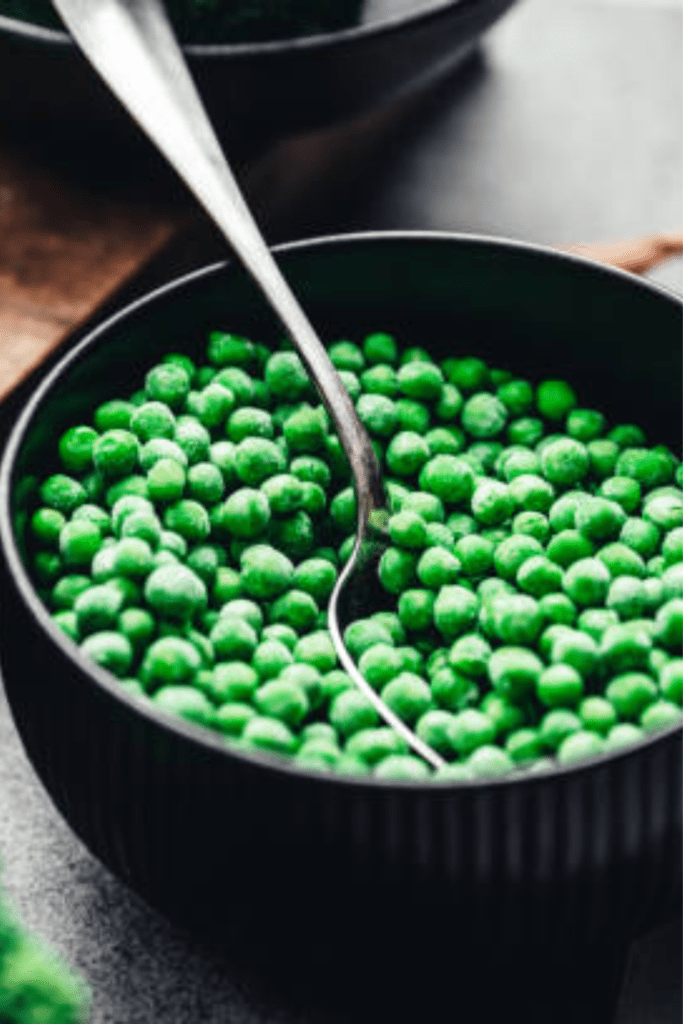
Pea Nutrition Facts
Green garden peas are not only delicious, but also packed with essential nutrients that offer various health benefits. Here are some key pea nutrition facts to consider:
- Vitamins and Minerals: Peas are a good source of vitamin K, C, A, and B vitamins like folate. They also provide essential minerals such as iron, magnesium, and zinc.
- Fiber and Protein: Peas are rich in both fiber and protein, making them a great addition to a balanced diet. Fiber aids in digestion, while protein is essential for muscle growth and repair.
- Antioxidants: Peas contain antioxidants that help reduce inflammation and promote overall health.
- Low in Calories: Peas are relatively low in calories, making them a healthy option for those looking to manage their weight.
Including green peas in your diet can contribute to meeting daily nutrient requirements and maintaining a healthy lifestyle.
Sugar Snap Pea Recipes
Sugar snap peas, known for their sweet flavor and crispy texture, can be incorporated into a variety of delicious recipes. Here are a few creative ways to enjoy sugar snap peas:
- Sugar Snap Pea Salad: Toss blanched sugar snap peas with cherry tomatoes, feta cheese, and a light vinaigrette for a refreshing salad.
- Stir-Fried Sugar Snap Peas: Quickly stir-fry sugar snap peas with garlic, soy sauce, and a touch of honey for a savory side dish.
- Sugar Snap Pea Pasta: Add sugar snap peas to your favorite pasta dish for a burst of freshness and crunch.
- Sugar Snap Pea Hummus: Blend blanched sugar snap peas with chickpeas, garlic, lemon juice, and olive oil for a unique twist on traditional hummus.
Experimenting with sugar snap peas in various recipes can introduce new flavors and textures to your meals while reaping the nutritional benefits they offer.
The Satisfaction of Growing Green Garden Peas
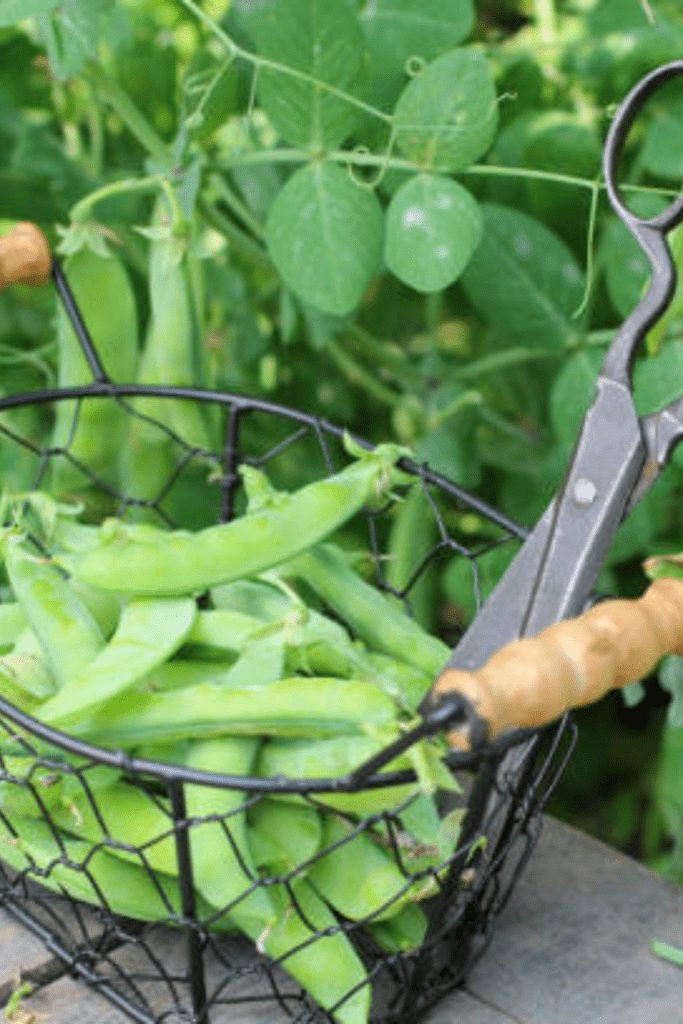
Benefits of Growing Green Garden Peas
Growing green garden peas not only offers the satisfaction of growing your own fresh, healthy produce, but also provides various benefits:
- Nutritional Value: Peas are rich in vitamins, minerals, and fiber, adding to a well-balanced diet.
- Cost-Effective: Growing peas at home can save money compared to buying them regularly from stores.
- Environmental Impact: Home-grown peas reduce the carbon footprint associated with transporting produce to stores.
- Educational Experience: Gardening can be a fun and educational activity for both adults and children.
Embracing the Joy of Harvest
Harvesting your green garden peas is a rewarding experience that signifies the culmination of your efforts. As you gather the plump pods filled with vibrant green peas, savor the fruits of your labor. Enjoy the freshness and flavor of homegrown peas in your meals, knowing you played a part in producing them. Embrace the joy of harvest as you prepare to enjoy the delicious and nutritious peas you cultivated.
Continuing the Green Garden Journey
While reaching the end of the pea-growing season can be bittersweet, it marks the beginning of a new cycle. Consider preserving your harvest through freezing or canning to enjoy peas during the off-season. Reflect on your gardening experience, noting the successes and areas for improvement. As you plan for the next growing season, envision the lush green pea plants thriving in your garden once again. Let the journey of growing green garden peas inspire you to continue nurturing your green spaces and exploring the world of gardening further.
Conclusion
As I conclude this post, it’s clear that cultivating these delightful legumes is a rewarding and achievable endeavor for any gardener. From selecting the right variety to savoring the fruits of your labor, growing green garden peas offers a fulfilling experience that connects us to the natural world and provides a bounty of delicious harvests.
As you continue your gardening journey, remember to apply the tips and techniques learned here, adapt them to your unique growing conditions, and most importantly, enjoy the process of nurturing and tending to your pea plants. With dedication and care, you can look forward to a season filled with the joy of harvesting perfect, plump peas straight from your own garden. Happy gardening!
Resources: Here are some helpful resources for further information.
- How to Grow Peas: The Complete Guide – By The Old Farmer’s Almanac
- Planting, Growing, and Harvesting Peas – By Growing In the Garden
- How to Cook and Serve Garden and Snap Peas – By Harvest to Table
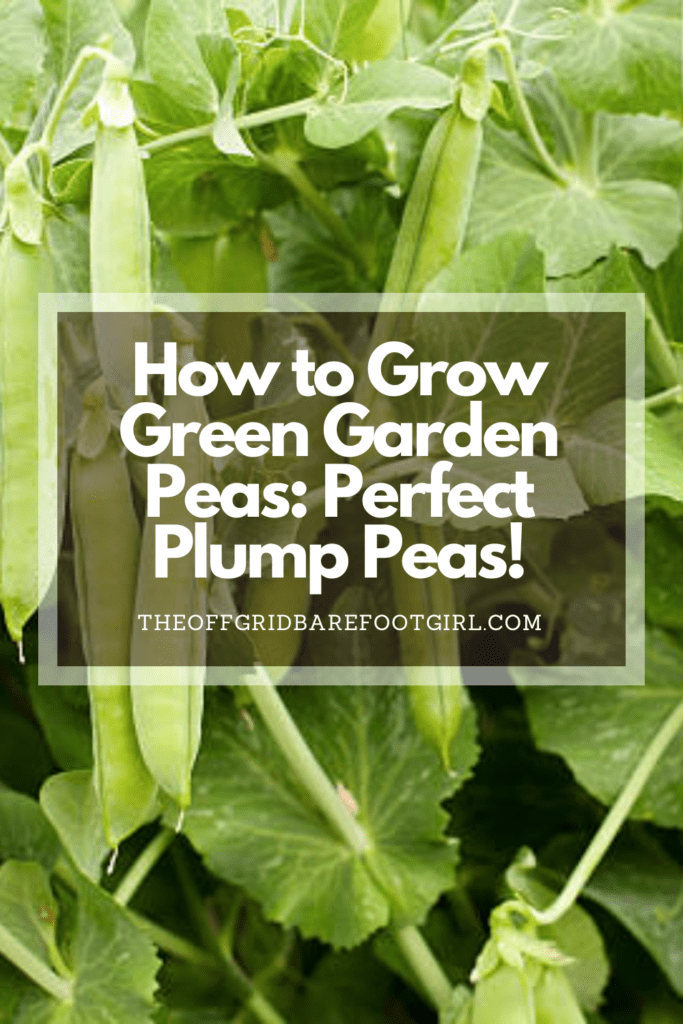
Frequently Asked Questions
1. When is the best time to plant green garden peas?
The ideal time to plant green garden peas is in early spring, as soon as the soil can be worked and temperatures consistently reach around 45-60°F (7-16°C). Peas thrive in cool weather, so planting them too late in the season can result in poor growth and reduced yields.
2. How do I support my pea plants as they grow?
Pea plants are climbers and will benefit from some form of support to keep them off the ground and prevent them from sprawling. You can use trellises, stakes, or even a simple pea fence made of chicken wire. Install your support structure at planting time to avoid damaging the roots later on.
3. Do green garden peas require a lot of water?
While green garden peas do need consistent moisture, they don’t require excessive watering. Keep the soil consistently moist, but not waterlogged, especially during the flowering and pod development stages. Mulching around the plants can help retain soil moisture and reduce the need for frequent watering.
4. How do I know when my green garden peas are ready to harvest?
Green garden peas are typically ready to harvest about 60-70 days after planting, depending on the variety and growing conditions. Harvest them when the pods are plump and well-filled, but still bright green in color. Test a few pods by gently pressing them with your thumb; if they give slightly and the peas inside are fully formed, they are ready to be picked.
Summary
I hope I have inspired you to grow green garden peas in your garden with these tips and products.
If you were encouraged by this post, I invite you to check out my FREE Printables Page for fun free printables, planners, and charts.
ENTER MY FREE Printables Page HERE
Here are some more of my gardening inspiration posts to check out!
Hugelkultur: Does This Epic Pioneering Method Actually Work?
9 Ways to Celebrate Earthing Day in Your Garden!
Gardening Indoors: Secrets of Growing Your Food Inside!
How to DIY a Milk Jug Drip Irrigation System!
Why Cedar Mulch Is The Perfect Natural Weed Barrier
Onions: How to Grow Onions for Storage
Peas: How to Grow Garden Peas for a Bumper Crop
Carrots: How to Grow Carrots for a Bountiful Harvest
Prep Your Garden for Spring Planting with These Expert Tips!
How to Grow a Prepper Garden to Survive and Thrive
The Best Garden Tools You Need for a Productive Season
Fastest Growing Vegetables for Your Survival Garden
How to Grow Marigolds As Pest Control In Your Vegetable Garden
Must-Have Tools for a Successful Balcony Vegetable Garden
How to Effectively Combat Powdery Mildew in Your Garden
The Best Tips for Organic Gardening
How to Release Ladybugs In Your Garden for Organic Pest Control
The Best Garden Snail Control Strategies
The Best Spring Vegetables to Grow in Your Garden
Seed Starter Mix: How To Make Your Organic Seed Starter Mix At Home
How to Grow a Productive Canning Garden
How to Plant and Grow a Salsa Garden
Easiest Heirloom Vegetable Seeds to Grow Now
How to Use the Hand Twist Claw Tiller: Tackling Tough Soil
More Fun Gardening Posts to Check Out!
Planning Your Garden: How to Plan a Vegetable Garden: Expert Green Thumb Tips!
Winterizing the Garden: How to Winterize Your Vegetable Garden: Step-by-Step Checklist
Mulching the Garden: How to Make Leaf Litter Mulch
Grow a Pumpkin Patch: How to Grow a Pumpkin Patch in Your Backyard
How to Grow a Fall Garden: 9 Best Fall Crops
Clever Ways to Incorporate Indoor Composting into Your Home
How to Start Composting for the Garden: A Step-by-Step Guide
The Ultimate Guide to Composting in Your Suburban Backyard
Why I Built A Survival Garden in My Backyard
16 Best Medicinal Herbs to Grow in Your Garden Now
Blessings,
The Off Grid Barefoot Girl

